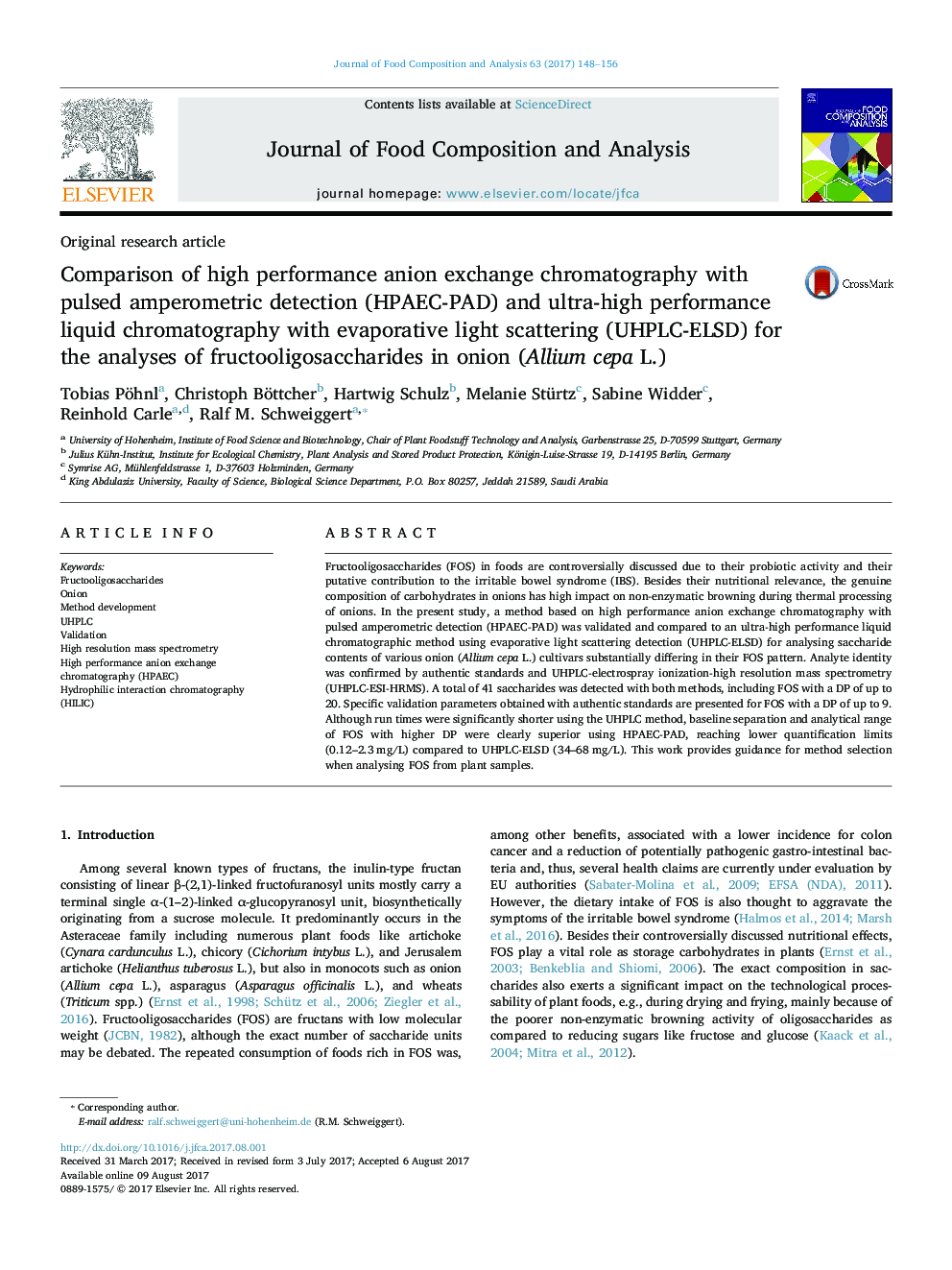| Article ID | Journal | Published Year | Pages | File Type |
|---|---|---|---|---|
| 5136826 | Journal of Food Composition and Analysis | 2017 | 9 Pages |
â¢Comparison of UHPLC & HPAEC methods for analysing soluble carbohydrates from onion.â¢Validation of both methods with up to 7 authentic fructooligosaccharides (DP 3-9).â¢Baseline separation of most fructooligosaccharides by HPAEC.â¢Carbohydrate analyses by UHPLC-ELSD within 25 min.â¢High resolution mass spectrometry of onion fructooligosaccharides.
Fructooligosaccharides (FOS) in foods are controversially discussed due to their probiotic activity and their putative contribution to the irritable bowel syndrome (IBS). Besides their nutritional relevance, the genuine composition of carbohydrates in onions has high impact on non-enzymatic browning during thermal processing of onions. In the present study, a method based on high performance anion exchange chromatography with pulsed amperometric detection (HPAEC-PAD) was validated and compared to an ultra-high performance liquid chromatographic method using evaporative light scattering detection (UHPLC-ELSD) for analysing saccharide contents of various onion (Allium cepa L.) cultivars substantially differing in their FOS pattern. Analyte identity was confirmed by authentic standards and UHPLC-electrospray ionization-high resolution mass spectrometry (UHPLC-ESI-HRMS). A total of 41 saccharides was detected with both methods, including FOS with a DP of up to 20. Specific validation parameters obtained with authentic standards are presented for FOS with a DP of up to 9. Although run times were significantly shorter using the UHPLC method, baseline separation and analytical range of FOS with higher DP were clearly superior using HPAEC-PAD, reaching lower quantification limits (0.12-2.3Â mg/L) compared to UHPLC-ELSD (34-68Â mg/L). This work provides guidance for method selection when analysing FOS from plant samples.
